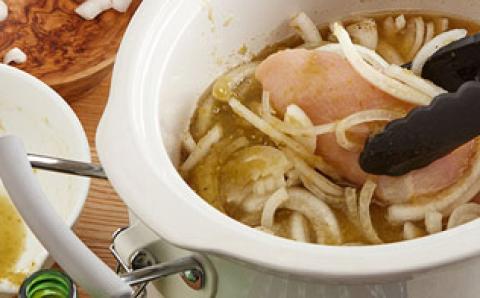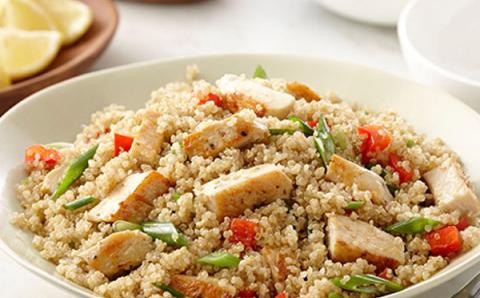How to Step up Your Soup Game
January 2025

This is a wake-up call for those who think dumping a can into a bowl, then microwaving it counts as “making soup.” Use this handy guide to learn how to actually make soups that warm the hearts of your friends, family and Instagram followers. They will thank you later. Let's get started!
Basics of a Perfect Soup
Cut the meat and vegetables into bite-sized pieces. Add them directly to your broth or sauté them first in a little oil or butter. Sautéing concentrates the flavors, adds a bit of caramelization to your meat and veggies and also cuts down on cooking time.
Add the long cooking vegetables, such as potatoes and carrots, and dried herbs at the beginning of your soup making. Dried herbs take longer to extract their flavors.
Add the short cooking vegetables, such as spinach, broccoli and green beans later in the cooking time. Add fresh herbs near the end of your soup making. Fresh herbs will add a pop of freshness at the end of cooking. Adding them too soon and you will lose the fresh flavor.
Simmer over low heat until everything is tender, usually 30 minutes to 1 hour. Simmering allows all of the flavors to develop and concentrate.
Taste for seasoning. Season with salt and pepper lightly at the beginning of your soup making. As the soup cooks, the flavors will concentrate and the broth will reduce. You can always add, but it's hard to take away.
- Thick or Hearty Soups: Remove some of the solids from the finished soup and puree in a blender or processor then stir back into soup. Stir a paste of equal parts flour and butter or cornstarch and cold water into simmering soup and cook until thickened.
- Creamy Soups: Add milk, cream or coconut milk into simmering soup and cook until creamy. For cold soups, stir in yogurt or sour cream and chill until ready to serve.
- Spicy Soups: Studies have shown that the spicy compound in chilies may boost your body's metabolism and help to burn calories. People who live in hot countries eat spicy soups to help keep cool!
- Cold Soup: Cold soups take advantage of fresh fruits and vegetables and usually require little or no cooking. Cold soups usually require more seasoning because the palate senses less flavor in cold foods than hot or warm.
- Portions: Allow ½ to 1 cup per person, depending on richness, for a starter course. Allow 1 ½ to 2 cups per person for an entrée course.
- Reheating: Re-heat creamed soup by bringing them slowly to a boil, reducing the heat and then simmering for about 2 minutes until heated through. Slow re-heating reduces the chance of the soup separating and breaking.
- Freezing: Soups should keep about 2 months in the freezer. Freeze in plastic containers, leaving space at the top for expansion. If cooking soup to freeze, undercook vegetables slightly so they won't become mushy upon re-heating. Don't freeze soups with vegetables like potatoes unless you plan on pureeing the soup. Potatoes become grainy and mushy when re-heating.
Basic Soup Varieties
Other
Flavors

5 Potluck Recipes Everyone Will Love
October 2024

Tips to Host a Soup Swap
January 2025
Reserve your seat at The Table
Subscribe













